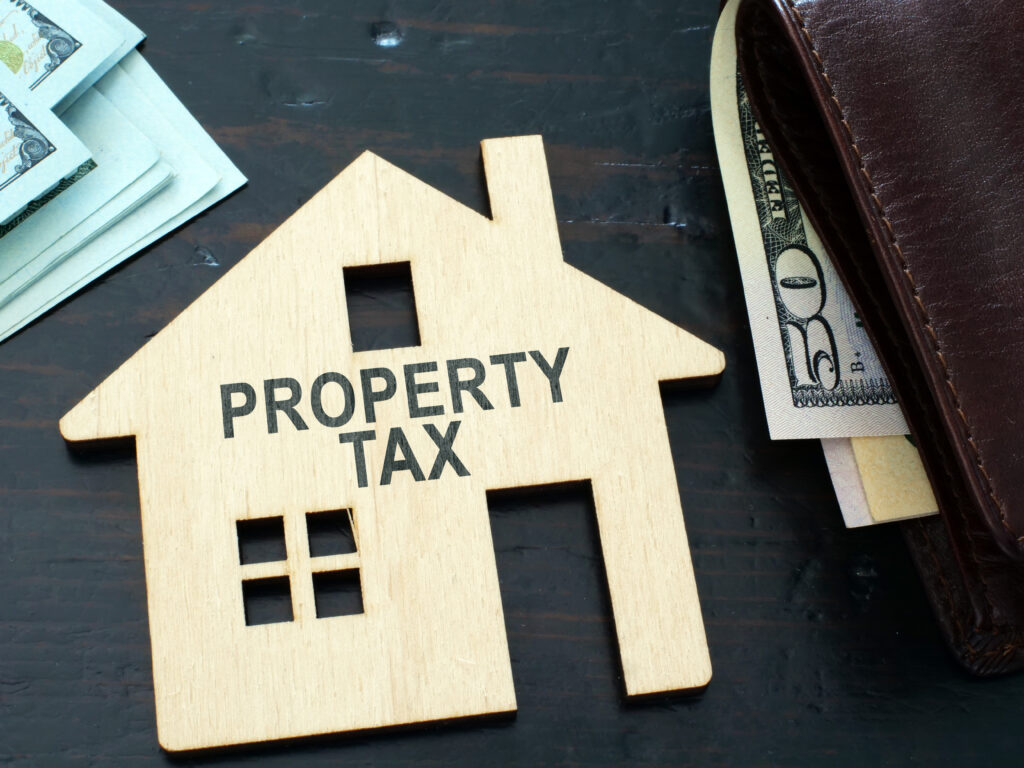Lawmakers and politicians seeking state office are focusing intently on property taxes. (Getty Images)
The momentum is clear: property taxes are a top issue in this election cycle and will almost certainly be addressed in some way in the 2025 legislative session. That’s why cities and towns are coming to the table now.
Accelerate Indiana Municipalities (AIM) is touting three areas in the discussion its members can find common ground on.
“I want to say that this is a free-market system that was developed by the legislature in 2009 and overwhelmingly put into the state’s constitution. So, we don’t believe, from a local perspective, this needs to be a massive overhaul,” Noblesville Mayor Chris Jensen said. “This really should be a surgical examination of pain points for Hoosiers and addressing them accordingly.”
He chairs the organizations’ legislative committee and talked with the ICC about the coming session.
AIM says it doesn’t want Hoosiers to lose their homes. But the group also notes that property tax revenue accounts for almost 60% of a municipal budget — and nearly half of those budgets are spent on public safety. The remaining funding comes from local income taxes, road dollars, food and beverage taxes and more.
Any significant revenue losses could mean cuts in services that mayors around the state want to avoid, especially with inflation remaining problematic.
Looking at the data
But there are also numbers on the side of the homeowner.
According to an analysis by the Association of Indiana Counties and Policy Analytics, the gross assessed value of homes jumped 16.5% on average between 2022 and 2023 and property tax bills increased by 18.2% on average.
The jumps are largely related to increased assessed value of property following the pandemic. The value is based on sales of similar properties.
But Jensen and others note this is cyclical and values are already starting to normalize. For instance, the certified net assessed value for all properties statewide grew 6% in 2024, a lower increase than 15% in 2023.
The Indiana Department of Local Government Finance has recent data for the property taxes being paid in 2024.
The median property tax bill for homesteads went up 5.63% in 2022 compared to 3% in 2018. But then in 2023 the median property tax bill for homesteads jumped almost 13%. For 2024, that increase is 4.73%.
All three candidates for governor have laid out plans that would have differing impacts on local government budgets.
The Libertarian proposal is most drastic but also has little to no chance of becoming law.
Republican Mike Braun, however, could gain traction with his plan should he win in November. The campaign didn’t provide a fiscal analysis for his proposal but rough estimates are upwards of a $1 billion loss for local government. Of course, that also means a savings for citizens.
Then there is Democrat Jennifer McCormick, who would focus on giving income tax relief to make up for increases in property taxes. Her plan would save taxpayers $600 million but would put the brunt of the losses on state revenue instead of local units of government.
Municipalities push their own ideas
The three areas cities and towns want to focus on are:
The maximum levy growth quotient currently limits how much local property tax levies can rise in a year based on a six-year rolling average of non-farm personal income growth. Because of inflation, it rose to 5% in 2023 compared to 3.4% in 2019. Lawmakers last year put in an artificial cap of 4% — when, without the cap, this year’s maximum would’ve been 5.5%, according to the Indiana Office of Management and Budget. AIM says it supports regional averages to soften spikes but doesn’t support hard statewide caps.
Mayors would like additional local revenue streams. This could come by making it easier for cities to implement local income taxes without going through the county council, or through food and beverage taxes without having to seek permission from the Legislature each year. “I don’t think any of us are big spending mayors,” Jensen said. “At the same time we know our communities, and if we need to go to that for an alternative revenue stream for our community, we should be allowed to do that and face the consequences and be accountable to voters.”
The last area would be targeting relief for at-risk Hoosiers, such as low-income seniors. AIM thinks the relief should be means-tested instead for every Hoosier above 65 years of age. Jensen noted there are many seniors in the state that are well off and can afford the tax bill; and seniors are the highest users of funded services by property taxes, such as police and fire.
Jensen said he thinks lawmakers want to take a measured approach.
“Our goal right now is to link up with the legislature, to come out and say, “Hey, we hear you. We want to be a part of this solution,” he said.
I hope legislators consider these options and find a balanced approach. The fact is the system is operating as designed. And because property taxes are paid in arrears, the worst of the spike is already in the past.
There is always room for tweaks and minor change but if lawmakers cut too deeply cities, towns and counties won’t be able to provide the basic services their current residents expect, and that attract newcomers to stay. And that puts jobs and state progress at risk.
GET THE MORNING HEADLINES DELIVERED TO YOUR INBOX

